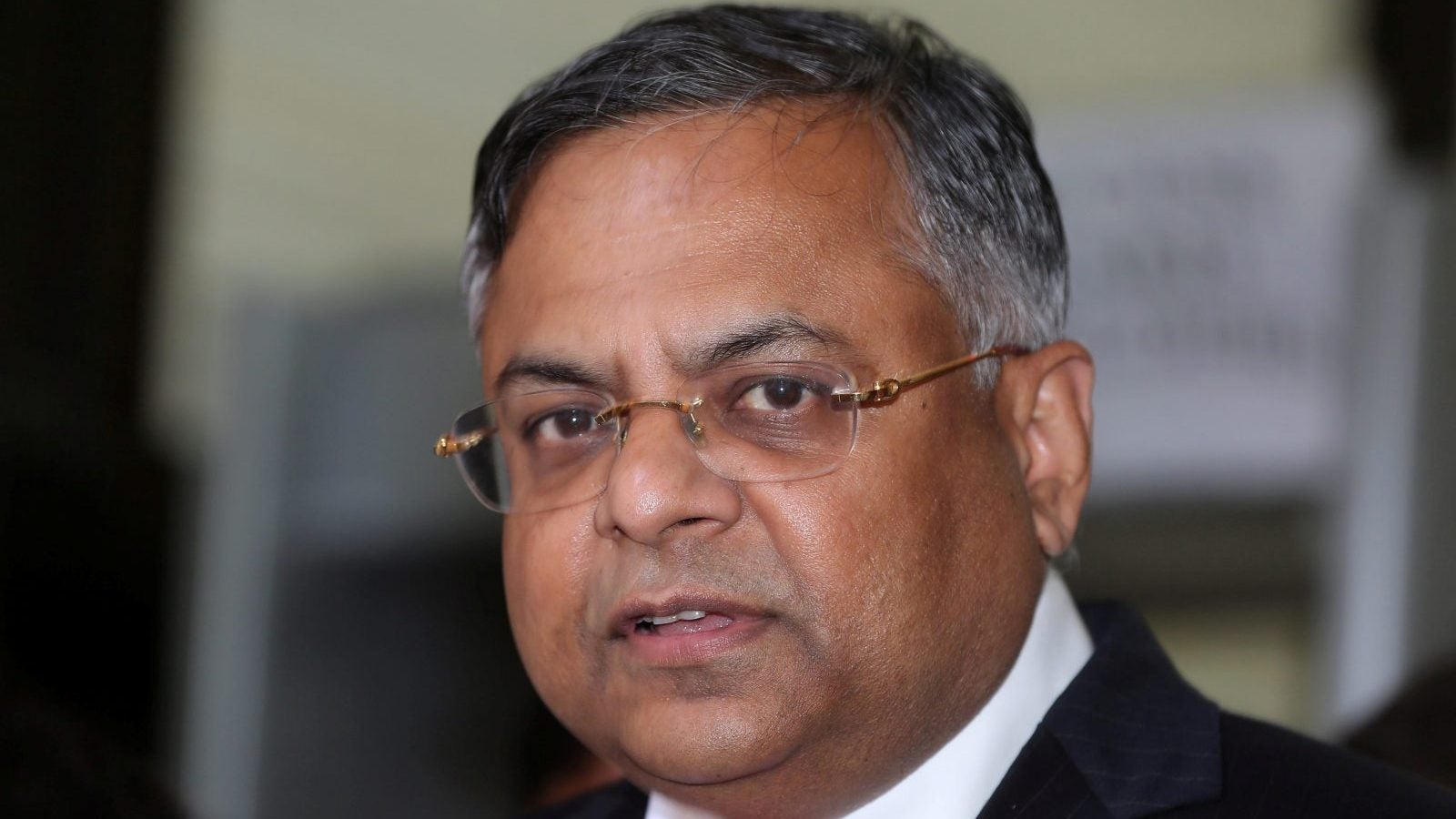Career advice from the chairman of Tata Sons, as told to the graduating class of 2017 at IIT-Kanpur
Natarajan Chandrasekaran is the chairman of the board of Tata Sons. He joined the Tata group’s Tata Consultancy Services (TCS) in 1987 after completing a master’s degree in computer applications from Regional Engineering College, Trichy, in Tamil Nadu. He held various leadership positions in the company and was the CEO of TCS until February 2017, when he took over as the group’s chairman.


Natarajan Chandrasekaran is the chairman of the board of Tata Sons. He joined the Tata group’s Tata Consultancy Services (TCS) in 1987 after completing a master’s degree in computer applications from Regional Engineering College, Trichy, in Tamil Nadu. He held various leadership positions in the company and was the CEO of TCS until February 2017, when he took over as the group’s chairman.
On June 15, Chandrasekaran spoke to the graduating class of 2017 at the 50th convocation of the Indian Institute of Technology, Kanpur. Below is a lightly edited version of his speech.
I’m pretty sure all of you who have received your awards today have pretty much charted out your plans. Some of you, I’m sure, are going for higher studies, some of you are taking up jobs here or anywhere else in the world. But I thought I will use this opportunity to share a few thoughts about what is around us in terms of technology, and what’s happening in our own nation, the challenges and opportunities.
From a technology point of view, needless to say, the word “digital” is everywhere.
Many call it the fourth industrial revolution, but this is a very special one. In general, or every time there has been a technological breakthrough, there has been a tremendous growth in the economy because a breakthrough makes several things possible. It helps us to imagine a new world—it happened with steam engines, it happened with electric power, both times the world economy grew 10-12 times from a GDP perspective, compared to the population growth, which was much more linear.
But in the last 30-40 years, with the advent of computers and internet, the economic growth has been a whopping 37 times, if you go back to the 1950s-60s and see where we are today.
But with digital, I think it is going to be lot more path-breaking.
That is because here is a time where a large number of technologies are coming together with a tremendous speed. In the past, if there was a technological revolution, the uptake time will be a few decades. Now, I don’t know how many of you have seen a fax machine because only 10 years ago we used to be talking about fax machines, 15 years ago we used to be talking about telex machines.
Even the smartphones, iPads, are barely 7-8 years old and the different types of technologies that are coming in are coming at a pace of a year, two years, three years, and each one is adding to the power.
In businesses generally we talk about process and data. Most businesses have succeeded over the last several decades by focusing on process maturity—be it manufacturing, be it services…the story is the same. But now, it’s not only a technological shift, the shift is towards data. So, from a business perspective, we are now getting into a time where every business will be reinvented by attaining data maturity. It is no longer about pattern recognition of the past, it is no longer about real-time response to the data that you see today… it is about giving response to an anticipated data that’s going to happen.
I kind of feel a shift where for the first time we are going to see, instead of technology supporting business or tech getting embedded in business, we are going to see, and we are seeing, several new businesses—some of the startups that we have heard of—where business is going to get embedded in technology. That is a very fundamental shift, and that throws huge amount of opportunities because we are not talking about technological innovation, we are not talking about a business process innovation… we are talking about business model innovation.
And you can see it in every industry. You see it in travel, you see it in hotels—the digital industries have a market value which is multiple times higher than the physical industries
That’s the economic opportunity, that’s the value creation, and, by the way, that will create a significant amount of new jobs.

If you see it from the context of India, we are probably in the most exciting time in this country. We are becoming the second-largest consumer economy, we have, I think, the third-largest startup ecosystem, our GDP growth is the highest among nations in the world. There is a significant increase of FDI: in the past most investments into the country were through FIIs; now we see significant investments happening through FDI.
It’s almost a situation where all the stars are aligned. And there is a huge push by the government, both in terms of technological adoption and also economic reforms: technological adoption in terms of many many initiatives under Digital India and economic reforms like the GST.
All of this will give rise to huge opportunities, but at the same time, we have challenges. The biggest opportunity for us is digital because of the fact that we have a very young population and adoption of any of these technologies is faster in our country.
At the same time, our problems are many.
We can go industry by industry. If you take healthcare, we don’t have enough hospitals, we don’t have enough doctors. The doctors-to-patients ratio will be one of the worst in the world, and that too, if you take the ratio in urban India versus rural India, the numbers are very glaring. The student-to-teacher ratio in education is another problem; the number of teachers we need in order to educate the people joining schools is just enormous. The numbers are staggering: an estimated 400,000 teachers are needed. So, you can give a large number of statistics by going through different industries. And we don’t have the time or the money to be able to organically bridge this gap. You can’t produce another 500,000 doctors in five years. You can’t produce, both in terms of quality and in terms of quantity, the number of teachers we need in a few years. And the same is true if you take the manufacturing industry or any other industry.
So, there is a demand for skilled people, for specialists.
But on the other hand, we also have lots of students graduating. An estimated 10 million people join the workforce every year. So, we will add another 100 million to the workforce in the next 8-10 years. We need jobs for all of them. There is clearly a gap.
On the one hand you have demand, on the other hand you need jobs.
So, what is important for us is to address both. That’s the challenge in front of us. On the one hand, we need innovations and entrepreneurship to serve the demand. Our demand is a slightly different one. When we say innovation, yes, research in innovation is very important—doing fundamental research, finding the next drug to cure cancer, or whatever. But the innovation that is required in our country is to be able to provide access: access to people who are poor, at the same time access to people who are not in locations where that particular service or skill, or specialist is available.
And at the same time, increase the bandwidth of the specialists so that with the available physical assets, whether it is hospitals or schools, or plants or whatever, we are able to address the demand. And that’s where a significant amount of entrepreneurial opportunity will arise, and that’s where so many innovations will happen. And those innovations will create lots of jobs, not necessarily for specialists, but it will create jobs for people who are skilled, semi-skilled, and qualified in different disciplines. And that is the real opportunity.
I would go to the extent of saying that this level of entrepreneurial and innovative opportunity doesn’t exist anywhere else. And that’s what is in front of you.
And by the entire ecosystem focusing on both sides, hopefully, we’ll be able to create job opportunities, on the one hand, but capture the economic value on the other hand, and create lots of entrepreneurs in our country. Those are the thoughts I wanted to share with you. And it is an exciting time, and I hope some of you will take up or participate in this entrepreneurial opportunity, and these innovations that are going to happen and hopefully some of you will join the Tata group, too.